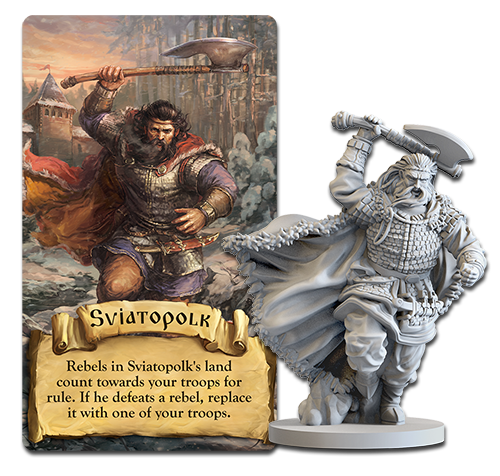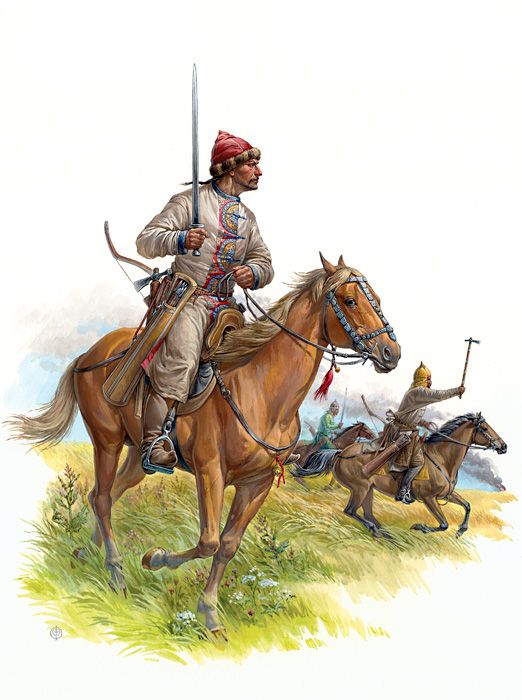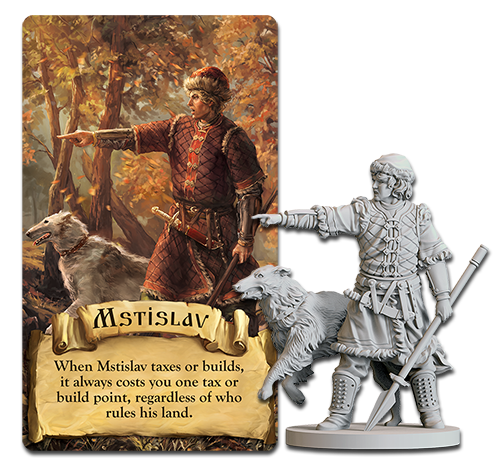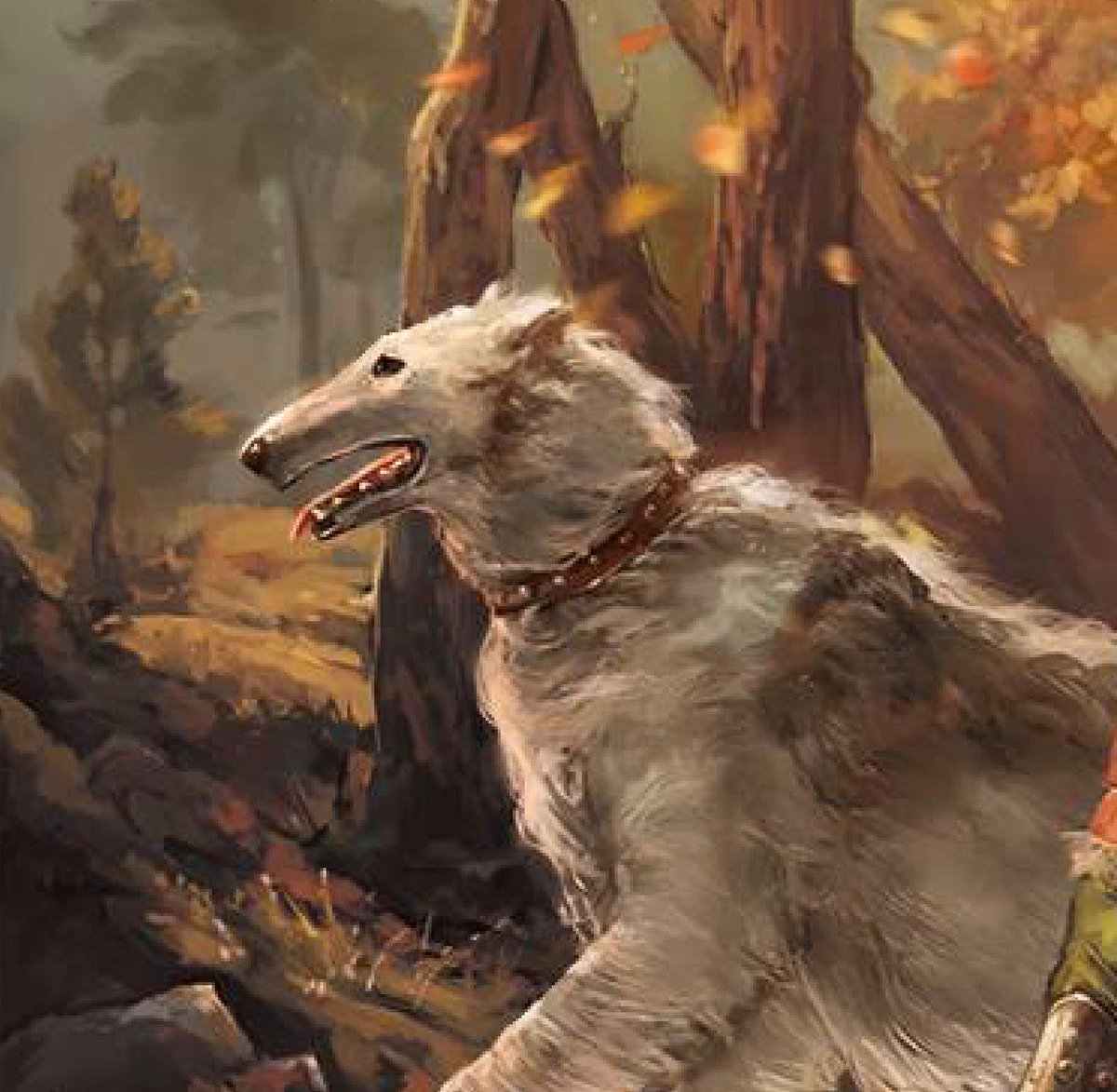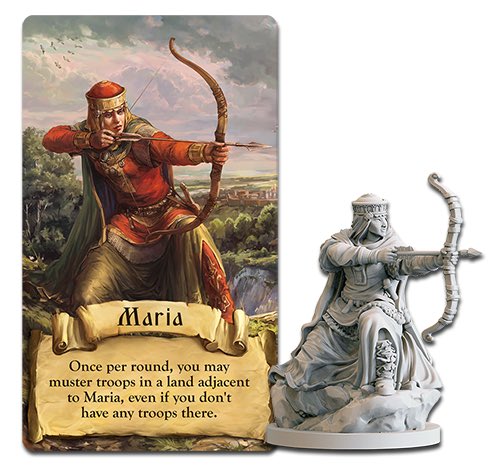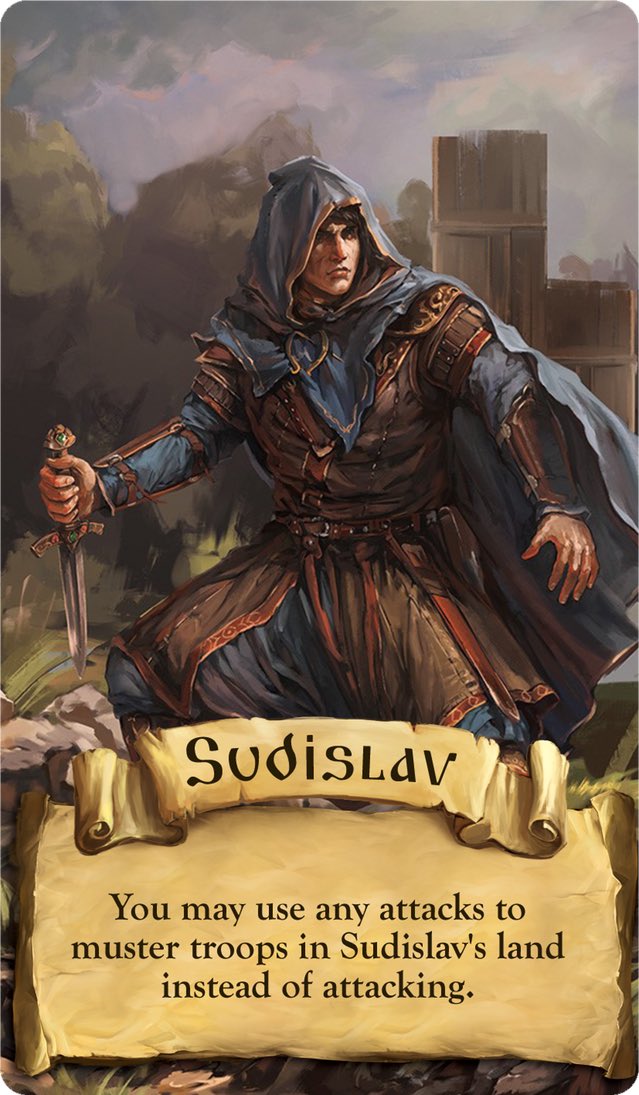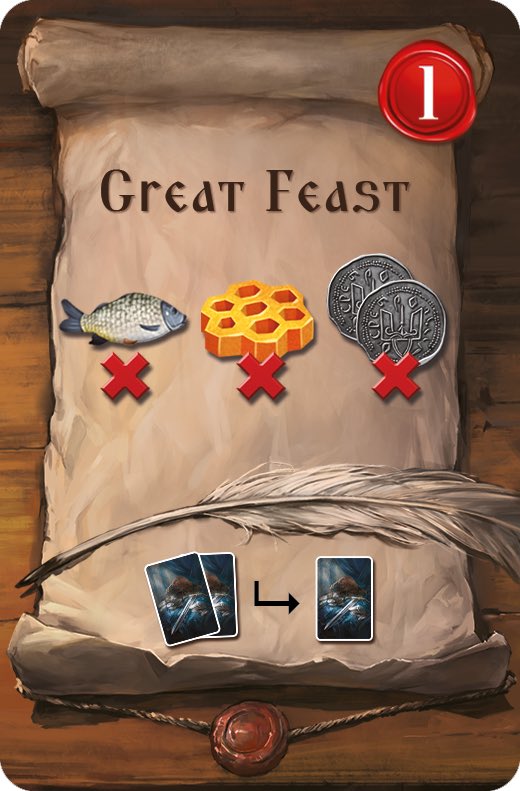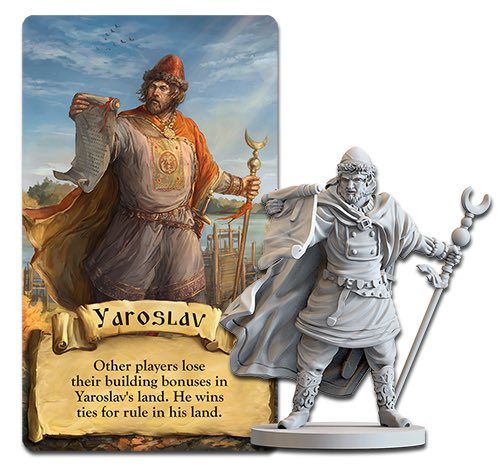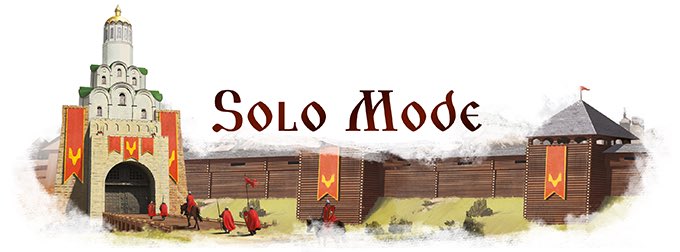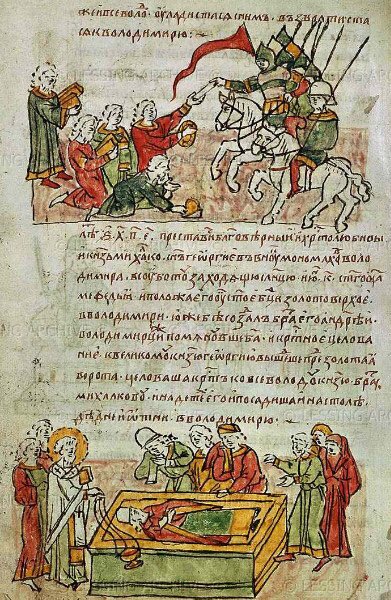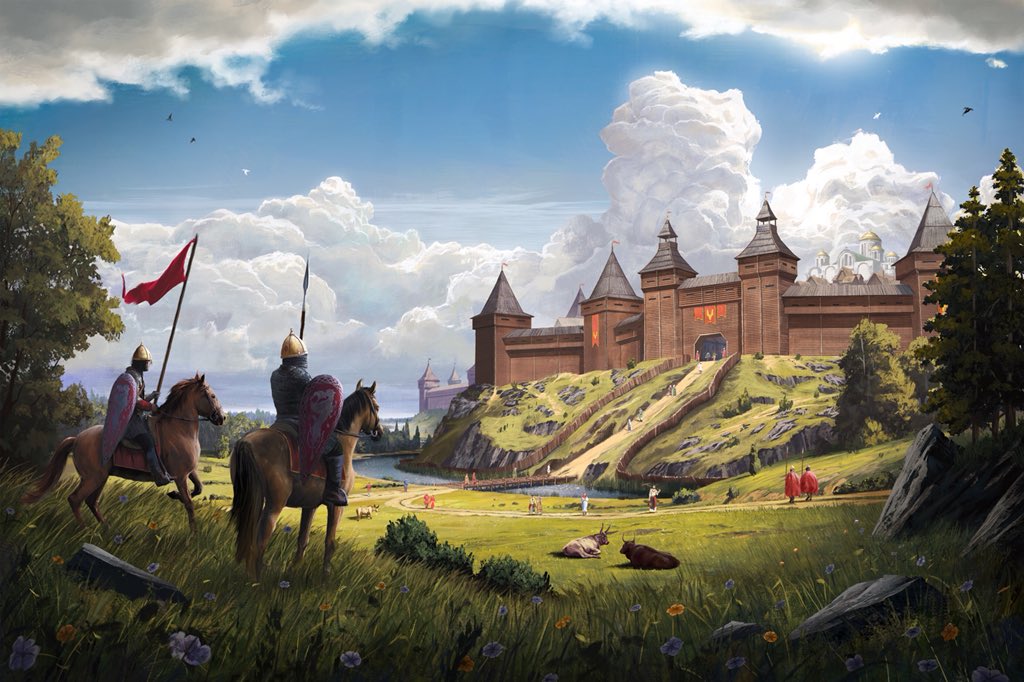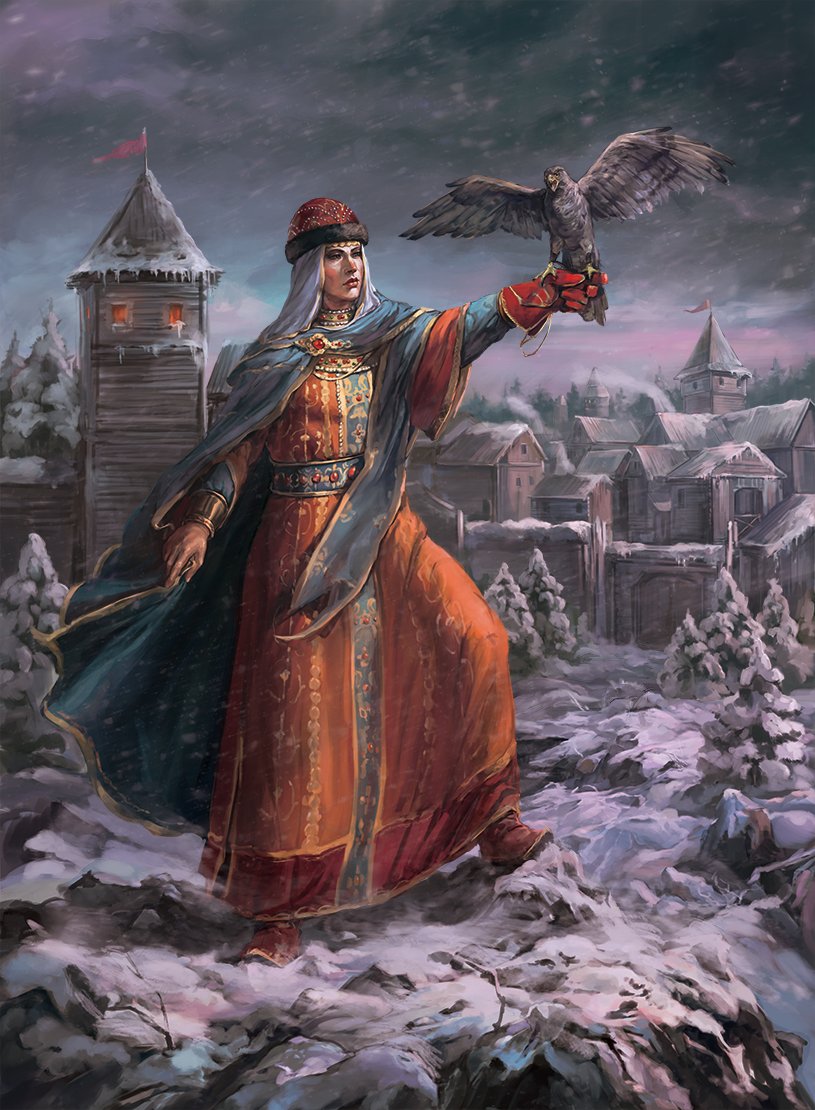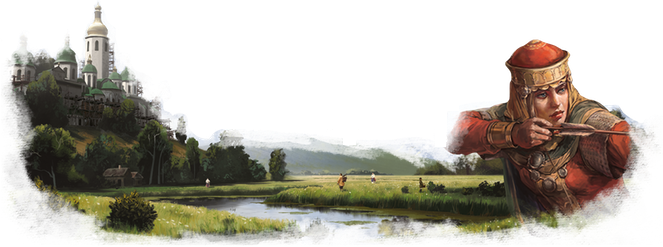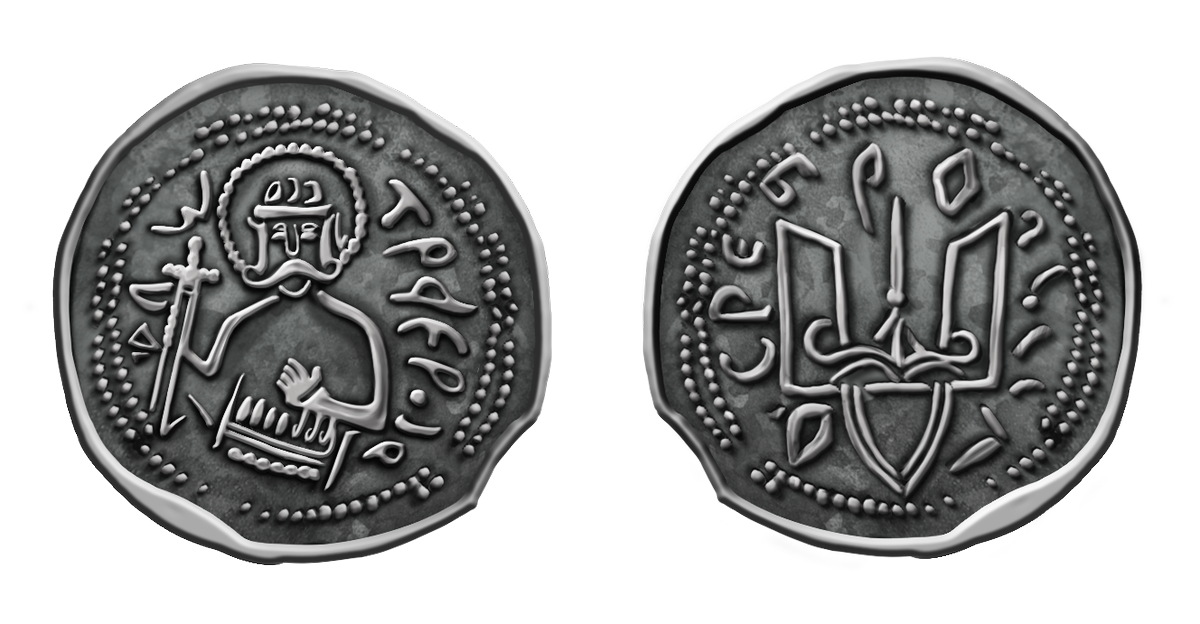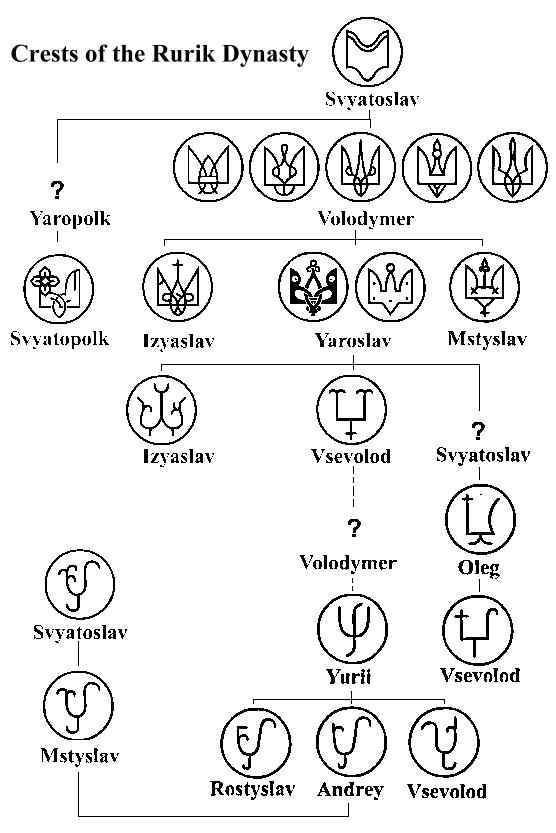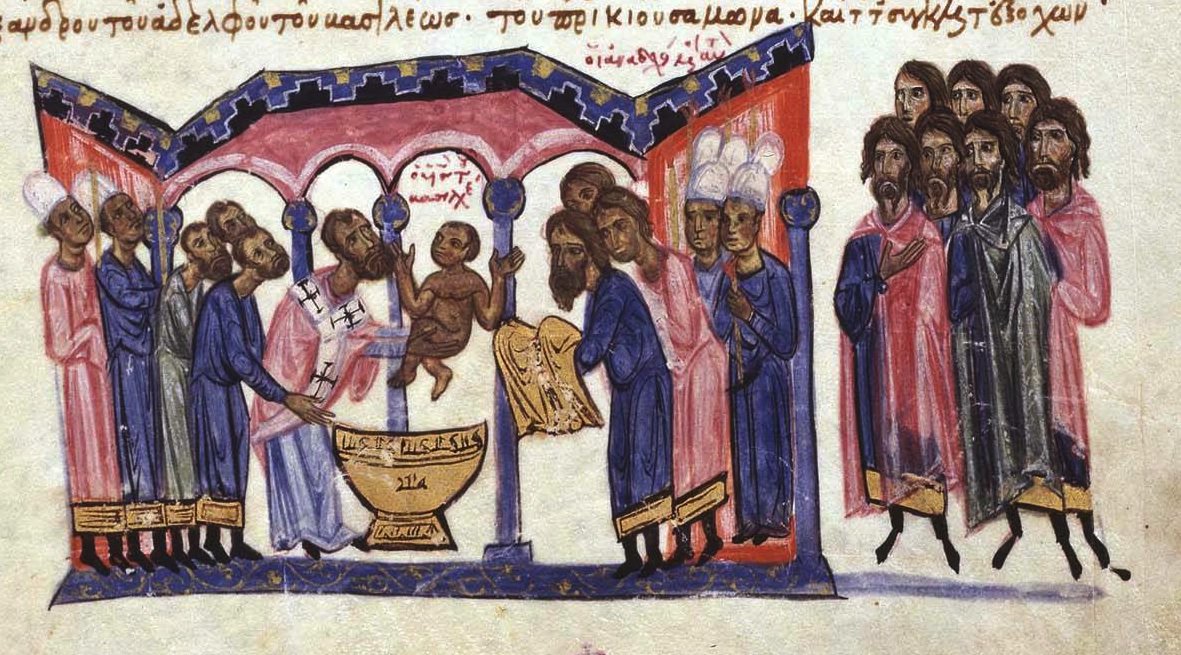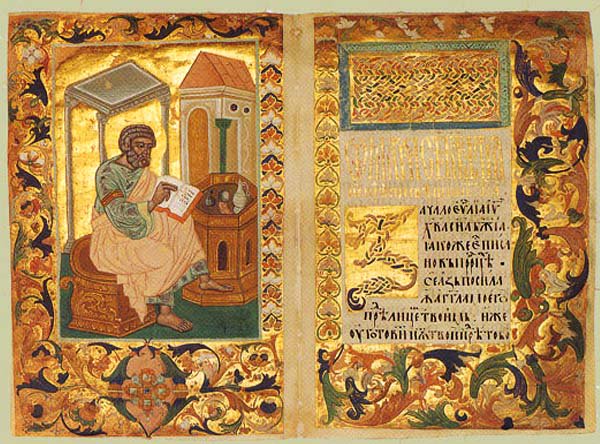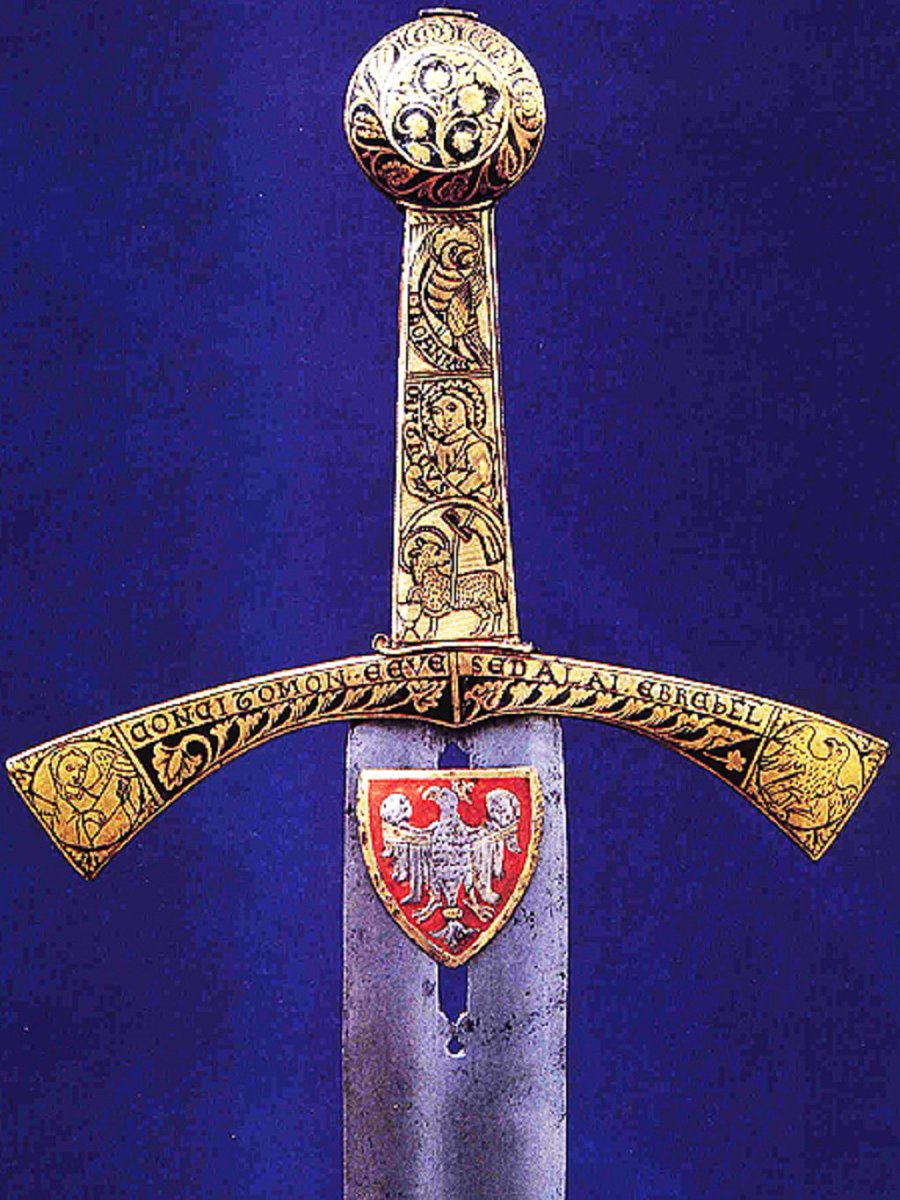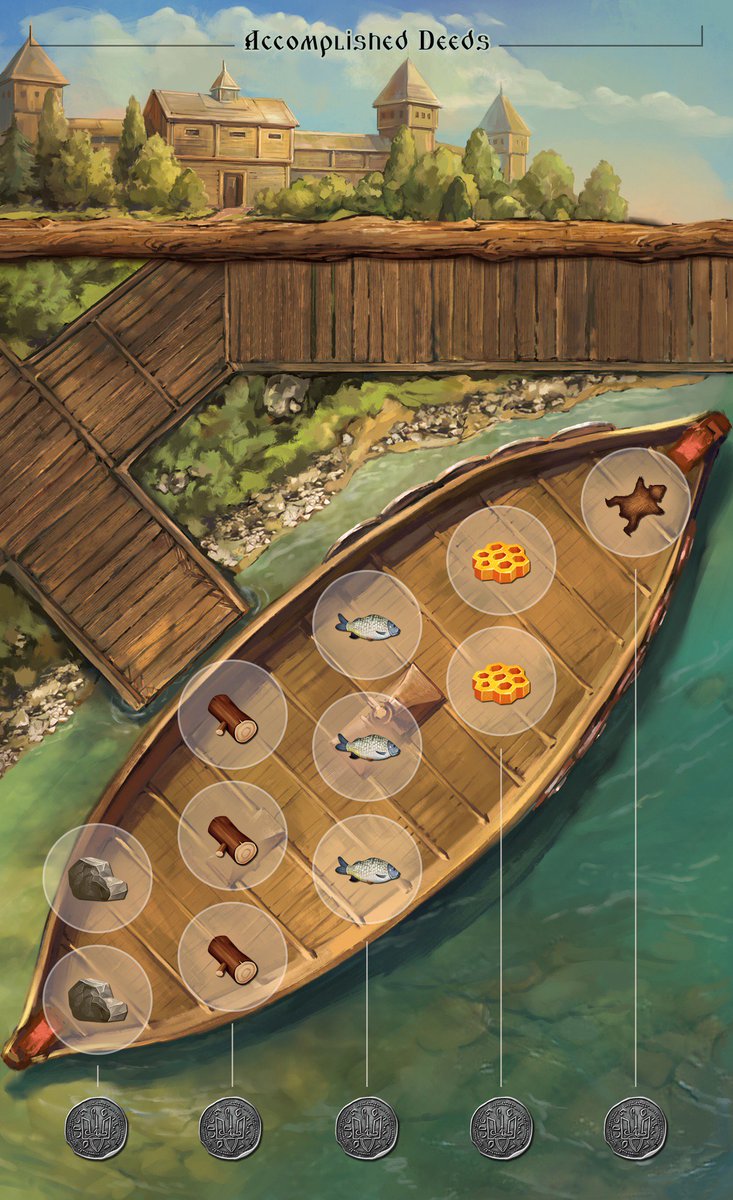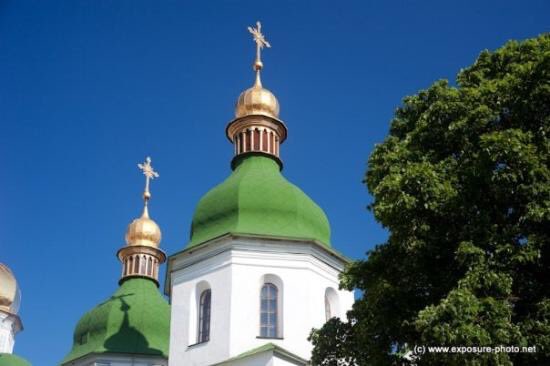Each like on this tweet = 1 awesome fact about Rurik: Dawn of Kiev
which you can check out on Kickstarter here: https://www.kickstarter.com/projects/83162467/rurik-dawn-of-kiev?ref=4idu3a">https://www.kickstarter.com/projects/...
which you can check out on Kickstarter here: https://www.kickstarter.com/projects/83162467/rurik-dawn-of-kiev?ref=4idu3a">https://www.kickstarter.com/projects/...
Rurik features an innovative mechanism for selecting your actions: auction programming.
You bid on columns of actions with your numbered advisor meeples, but after all advisors are placed, you must take those actions in numerical order, from highest to lowest.
You bid on columns of actions with your numbered advisor meeples, but after all advisors are placed, you must take those actions in numerical order, from highest to lowest.
1. Sviatopolk – pictured here, is nicknamed "The Accursed" / "The Damned" because shortly after the succession war broke out, he orchestrated a triple assassination of his brothers. (though some historians believe that one or more of the murders was pinned on Sviatopolk)
2. The name of the game, Rurik, comes from the founder of the dynasty that ruled Kievan Rus and several of its successor states. Rurik was a Varangian, what most people now would refer to as a Viking.
3. The troops that fought in Kievan Rus& #39;s succession war came from multiple distinct ethnic groups – while primarily Slavic and Varangian ancestry, they also included Lyakhs (Polish peoples), and Turkic nomadic tribes, like the Pechenegs and Khazars (artist depiction below).
4. Mstislav, one of the leaders you can play in Rurik: Dawn of Kiev, was absent from the beginning of the war because he was part of an joint expedition against the last Khazar Khagan (Khan of Khans).
5. ZOOM IN ON DOG: Sighthounds are one of the oldest recorded breeds of hunting dog. It& #39;s unconfirmed if Rus Princes hunted with Borzois, as depicted in Mstislav& #39;s artwork, but similar breeds were used throughout the region during the early 11th century.
6. Maria (shown below) was a key figure in the unification of Poland, helping Casimir I secure an alliance with her half-brother Yaroslav.
7. The ruler of Kievan Rus was titled the “Grand Prince” which was the title under which Rurik: Dawn of Kiev was submitted to @PieceKeeperGame
8. Sudislav was the longest-lived of Vladimir’s heirs, partly because Yaroslav imprisoned him to prevent him from making a bid at ruling. He was eventually released, but forced to become a monk.
9. A key part of the Kievan succession crisis was gathering support to be able to muster troops. Because there were so many rival claimants, princes gave away bribes to sway posadniks (similar to mayors) onto their side.
10. On the subject of support: Yaroslav was supported by Novgorod, which was unique among the regions of Rus in that it was a republic.
11. Rurik’s solo mode has a unique automa that will switch priorities between rounds. It does this to actively work against the player instead of just pursuing a singular strategy the entire game.
12. One of the main first hand sources of the period’s history is “The Primary Chronicle”, which was compiled by Nestor. The “Claim to the Throne” board in Rurik: Dawn of Kiev represents this chronicling of the Rurik dynasty’s achievements.
13. Nestor also wrote the hagiography for Boris and Gleb, two of the brothers Sviatopolk assainated who became saints.
14. It’s important again to stress that all these leaders were siblings or half-siblings. Vladimir the Great dies in 1015 with no succession plan - which sparks the conflict shown in Rurik: Dawn of Kiev.
15. Part of what makes the succession so messy is Vladimir set up many of his sons over their own city states / regions, so they have their own bases of support and armies.
16. Our goal with Rurik was to bring Kievan Rus to life for players, not create a historical simulation. For example, the princesses we chose as leaders were not historically eligible to rule, or recorded as leading troops in the conflict, but we wanted to showcase their stories.
17. There& #39;s also bias in the record sources at the time. Primary accounts of Kievan Rus are not as complete as, for example, 11th century England, especially when it comes to documenting women. Maria& #39;s whereabouts, for example, are unknown between 1015 and 1040.
18. The metal coins you can get as an add-on to the Kickstarter are based on real Rus coinage from the time period.
18b. The circle of dots around the ruler& #39;s head, btw, is not a Bob Ross style afro, but represents a halo.
19. Interestingly, the Rurikids (descendants of Rurik) didn& #39;t have a unified family crest like many other medieval dynasties. Instead, each prince modified a common symbology to make a personal emblem.
(I don& #39;t 100% agree with attached image, but it is helpful for visualizing)
(I don& #39;t 100% agree with attached image, but it is helpful for visualizing)
20. Kiev was a major trade hub at the time: goods could pass down the Dnieper River, to the Black Sea, and be traded with the powerful Byzantine empire. We feature two of the major exports from Kievan Rus into Byzantium as resources in game: Honey and Furs.
21. On a Byzantium note – Anna, Vladimir the Great& #39;s last wife, was a Byzantine princess – specifically, a Porphyrogenita, a title which requires her to be born in the special purple room in the Great Palace of Constantinople reserved only for the birth of royalty.
22. It& #39;s unclear if Anna and Vladimir actually had any children together. Some historical records modern scholars believe were actually re-written to make Vladimir& #39;s children by other wives credited to Anna, and there are conflicting sources.
23. I personally think they only had a single daughter (which also explains why she wasn& #39;t recorded as well): Theofana. The main source for asserting her parentage is the Ostromir Gospels – an illuminated book commissioned for her husband which has survived intact to this day.
24. One important landmark of 11th century Kiev was The Golden Gate, built by Yaroslav during the succession crisis. If you go to Ukraine now, you can see a reconstruction of the gate, but the original has long since been destroyed. It is featured on Rurik& #39;s Intrigue cards.
25. Legend has it that Boleslaw the Brave, who became king of Poland, chipped his sword on the Golden Gate when conquering the city for his son-in-law, Sviatopolk (discussed previously in this thread).
Painting by iconic 19th century Polish painter Jan Matejko.
Painting by iconic 19th century Polish painter Jan Matejko.
26. This is probably false, as it& #39;s mostly accepted that Yaroslav built the Golden Gate after Boleslaw had already left back to Poland. But it is a cool explanation for the origin of the Szczerbiec coronation sword (named for the Polish word for for chip, szczerba)
27. The first player marker in Rurik: Dawn of Kiev is an enormous wooden bear meeple. If that doesn& #39;t convince you to back this game, I don& #39;t know what will.
28. The "Claim to the Throne" board (modeled after the Primary Chronicle, discussed above) tracks player& #39;s scores as they demonstrate their leadership to the people: holding lands, constructing buildings, trading goods, and success in warfare.
29. Once you& #39;ve proved you can do something, it& #39;s been recorded and you don& #39;t have to worry about keeping that scoring condition. So if you ruled 5 lands at end of Round 2 and lost them all in Round 3, you still would score those points at the end of the game!
30. Goods you acquire can be placed in your boat to earn trade points. Before adding the placement element of the boat, players weren& #39;t as interested in the goods. After adding it, playtesters discovered an overpowered goods strategy that necessitated several changes.
31. Once it became more satisfying psychologically to acquire goods, we were able to see an imbalance that had existed in many previous versions that we hadn& #39;t yet detected. Good thing we caught it!
32. Can& #39;t get enough Rus? Into war-games? Check out @gmtgames upcoming "Nevsky", a wargame about the conflict between Novgorod and the Teutons about 200 years after the events in Rurik: Dawn of Kiev.
https://www.gmtgames.com/p-696-nevsky-teutons-and-rus-in-collision-1240-1242.aspx">https://www.gmtgames.com/p-696-nev...
https://www.gmtgames.com/p-696-nevsky-teutons-and-rus-in-collision-1240-1242.aspx">https://www.gmtgames.com/p-696-nev...
33. The church building shape in Rurik: Dawn of Kiev is based on the classic domes of period churches. Shown here next to a photo of Kiev’s Saint Sophia Cathedral.
34. Construction on Saint Sophia Cathedral was begun by Vladimir, but building a cathedral takes decades, so it was completed under the rule of Yaroslav.

 Read on Twitter
Read on Twitter